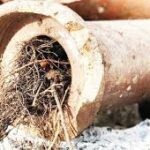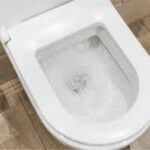You’ve Just Entered the Major League of Plumbing Disasters
Let’s face it – you probably chuckled watching your neighbor on the roof with the sewer snake, as if this was the fight of his life. Maybe you’re laughing a little less as we speak and it’s your turn. But there is good news—you have this snarky-but-straightforward guide to help you survive whatever trauma lays ahead from a mainline sewer blockage.
What Is a Mainline Sewer Blockage? The mainline is the most important drain in your house. It is a large 3–4″ pipe that combines waste from every toilet, sink, tub, and appliance. It is the exit ramp from your home to the municipal sewer or septic. When the mainline is clogged, everything backs up inside; not good for immediate or long-term health nor your pocketbook.
Everything causes blockages: grease buildup, tree roots, kid toys (yes, it happens); with enough pressure, it can block anything. When it fails, “Houston, we have a problem.”
How Do You Know You Have a Mainline Backup?
Before things get too crazy, look for the following signs that you might have a mainline sewer backup:
Shower fills when you flush: When you flush your toilet, if you notice any gurgle or flooding in the shower, that is not merriment at work; that’s a clog.
Gurgling toilets: When you hear the gurgling sound in the bowl, the air is escaping past a trapped state of sewage.
Water are coming out the clean-out: Crack open the cap on the cleanout pipe. If you remove the cap from the outside cleanout located outside your home and water starts pouring out, the mainline has likely failed.
Sewage in the basement: If you live in a townhouse or a home with bathrooms downstairs, a backup may flood from the toilet base or the floor drain.
Pro tip: Have a pair of waterproof boots handy. You’ll be glad you did.
Toilet Troubles or Mainline Disaster?
Think it’s just a clog in the toilet? If this is where you are, make sure to use a toilet auger first. If it does not help, use a longer drain snake or call a trusted local plumber.
Removing the toilet to snake the line? Get ready. If it is a mainline backup, the water you find can look more like a movie than plumbing matter. Prepare for splashdown.
Septic Tank Owners—Don’t Get Off So Easy
If you have a septic system, you may be dealing with:
An overfull septic tank
A failed drain field
Start with snaking the mainline. If that does not help, you are either going to have locate the septic tank (good luck!), or you will be searching trusted plumbing companies near you specializing in septic systems.
⚠️ Important: Don’t snake further than 12 feet into the septic line. If you lose the cable in the septic tank, you’re going to create an even bigger issue, one that will take backhoe and certain bravery to resolve.
The DIY Way (If You Can Keep Your Lunch Down)
Have a confirmed mainline backup, and are thinking about doing this yourself? Suit up—gloves, boots, eye protection, and maybe a nose plug. If you are lucky, you will get through to the blockage you are hoping to clear. If not, there is no shame in throwing in the towel.
Or Contact the Professionals
Not all heroes wear capes, some carry responsively augers and hydro-jetters. If you feel way over your head, now is the time to search “plumbing companies near me,” and get you a team of experienced local plumbers. They have seen it all and know how to fix it as fast as possible without making a bigger mess.
Final Thoughts
A mainline sewer backup is a major problem. It is messy, stressful, and can cause a lot of destruction if ignored. However, now you understand the warning signs and the startup of what you are really dealing with. You know what you need to do, or you can contact the pros.
So, whether you go full DIY or call a trusty local plumber, remember: this is one of those times when quick actions can save you from a long, smelly mess.





